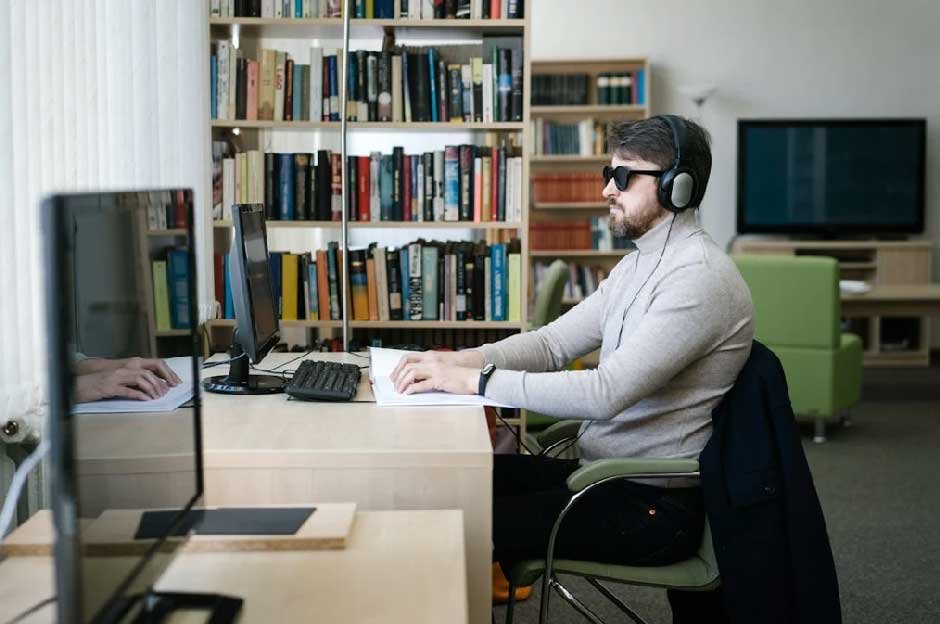Skip to the good bit
ToggleIn the present digital age, technology has become an integral part of modern life, be it industrial setups or services made accessible to people globally. This advancement in technology has made the lives of people with disabilities more autonomous, inclusive, and supported.
Barrier-free disability assistance programs are now highly reliant on innovation in technology to operate efficiently. From artificial intelligence (AI) to assistive devices, the convergence of technology and disability support provides a shining opportunity to empower the individual and create inclusion measures.
Communication Technologies for Greater Accessibility
Technology helps fill a communication gap for a hearing- or speech-impaired person, with the best hearing aids offering advanced sound clarity and customization. Applications such as Open Live Transcribe and Otter.ai provide real-time transcription for those with hearing impairments so that they can follow up on what is said.
The commercially available aid based on artificial intelligence now offers real-time translation of sign language into text or spoken words, providing an opportunity for verbal interaction with people who communicate using sign language. This comes in handy when applying for Rhode Island disability benefits as it enables the individual to be aware of what is expected.
For individuals who find it difficult to communicate verbally, augmentative and alternative communication devices have custom-designed systems, including symbols, voice output, and touch-based interfaces that effectively express thoughts and wants.
These advancements ensure that communication is no longer a hindrance and foster inclusion across schools, workplaces, and social settings.
Improved Mobility Through Assistive Devices
Assistive technologies have changed the mobility experience for persons with physical disability. An example of such an assistive technology is an electric wheelchair that can be customized to include features of unrestricted movement to the user.
Various brands have also availed innovative technologies such as sensors that detect obstacles, voice commands, and AI that adapts to a user’s environment. These robotic exoskeletons externally support people with paralysis or muscle weakness in walking and doing basic physical chores.
Smart canes fitted with sensors and GPS have proven helpful in allowing blind people to understand their surroundings by detecting impediments, vibrating to alert the user, and providing real-world locations.
Such devices augment mobility and open avenues for safety and confidence amongst disabled individuals.
Access to Education Through Assistive Technologies
This will include technology reshaping the learning opportunities open to people with disabilities. JAWS and NVDA software are designed to give sight-impaired people audio feedback on almost everything on the computer screen.
Educational environments today are more inclusive; various learning management systems feature options for captions on their videos, font size adjustment, and the ability to speak commands to support students with various special needs.
During lessons, other tools like speech recognition programs and adaptive learning apps enable students with dyslexia or ADHD learning disabilities to benefit from tailored education support.
In doing so, such technologies encourage equitable learning opportunities and skill development for persons with disabilities.
Employment Support through Inclusive Technologies
Assistive technology makes the workplace work better for everyone by allowing an effective and independent means for a person with a disability to accomplish their work.
For example, adaptive computer interfacing will include devices such as speech recognition software, eye-tracking technology, and even ergonomic devices for adaptations for people with mobility impairment.
These will enable people with health or mobility difficulties to access remote work opportunities on virtual platforms without being physically present.
AI job-matching platforms assist persons with disabilities in finding jobs that fit their needs and skills in accessible jobs. AI drives workplace diversity and equips individuals to bloom in the workplace.
Health and Wellness Innovations
Technology is a backbone for the support of health management and wellness for persons with disabilities. Wearable health monitors, such as Fitbit and smartwatches, monitor core health metrics and notify individuals and caregivers of any irregularities seen to provide proactive health management.
Telemedicine services allow these individuals access to professional healthcare online without the logistical difficulties of traversing the community to see a practitioner.
AI-fueled therapeutic tools are helping with physical therapy, cognitive retraining, and mental health support. These technologies facilitate healthy management among these individuals while improving their general quality of life.
Smart Home Technologies for Independent Living
Some of these smart home devices have enabled a change in accommodations that supports increasingly autonomous and safer living for disabled persons. Tractor-like, voice-controlled devices allow users to control lights, appliances, and security devices with voice commands.
Smart thermostats, door locks, and lighting systems learn user preferences and physical limitations and set the environment according to these specifications. These technologies help improve independent living options for people with disabilities while providing peace of mind to their caregivers and families.
Endnote
Technology is fast developing into a game-changer for disability assistance programs, offering practical applications that empower individuals and foster inclusion. From mobility enhancements to education access and workplace support, the benefits of assistive technology can truly change lives for people with disabilities.
As technology develops, the implications are extremely far-reaching for removing barriers, reducing stigma, and bringing about a more inclusive and equitable world.







